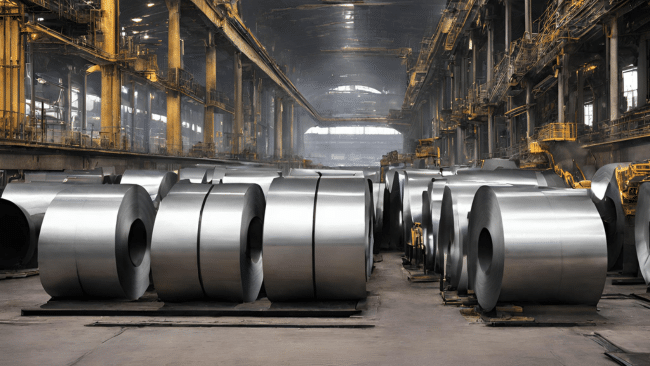India’s steel demand is expected to continue growing in 2024, despite predictions from experts and industry insiders of a possible slowdown. According to Shree Metal Prices, the impending general elections in 2024 are expect to have an effect on government spending, possibly reversing the upward trend.
The overall steel industry’s boom is closely correlat with the growth of the GDP. Even though the first ten months saw a remarkable 15% year-over-year (y-o-y) consumption growth. In FY23, consumption reached 120 MT, up 10% from the previous year, according to shree Metal Prices.
Market intelligence attributes the growth to significant pre-election year infrastructure spending and an expedited construction pace in anticipation of the upcoming general elections.
The FY24 budget shows a 33% increase in infrastructure capital investment outlay, totaling Rs 10 trillion, or almost three times the 2019–20 outlay.
Optimistic Projections: India’s Steel Demand Set to Grow in 2024
Abhudhay Jindal, Managing Director of Jindal Stainless Ltd (JSL), highlighted India’s emphasis on sustainable solutions, stating that the usage of stainless steel is expected to increase across traditional applications, process industries, or the household industry, as well as in emerging strategic sectors like defence, aerospace, and the green and blue economies.
Tata Steel is still upbeat about medium-term rises in the demand for steel.
Tata Steel sees sustained growth propelled by investments in real estate, infrastructure, positive consumer sentiment. And the govt’s focus on making India a global output hub, despite possible obstacles like a high-interest rate environment.
Nonetheless, some analysts predict a slowdown in Q4 because of the impact of election-related factors on construction and infrastructure spending. By the end of FY24, predictions point to a change in growth from the current 15% to roughly 10%.
While major domestic players announce large investments. The industry is concerned that during the current fiscal year, India may become a net importer of steel.
Between April or November, the alloy’s imports totaled 4.3 million tonnes, while its exports totaled 4 million tonnes. Regarding this matter, the industry has communicated with the government and has been promised action.
Stainless Steel on the Rise: Emerging Applications and Sectors
Jindal suggests temporarily imposing import restrictions in order to preserve fair competition. Which is especially important given that one-3rd of the stainless steel sector is made up of Micro, Small, & MSME.
“While the introduction by the government of a logistics policy is a positive step. The higher costs of capital and logistics in India have made the Made in India initiative less competitive,” Jindal continued.
He calls on the government to implement similar policies in India in response to international tariff barriers such as countervailing duties and anti-dumping duties on Chinese goods.
Tata Steel claims cheap imports haven’t affected the company and maintains its position as one of the lowest-cost steel producers.
